Top 9 Most Beautiful Historical Sites in Oman
Oman - a coastal country is home to many legends, historic monuments, and ultra-modern architecture, with spectacular natural views ranging from enormous azure ... read more...waters to chocolate brown mountaintops. From Muscat to Nizwa, and from Sur to Majlis Al Jinn, let’s explore 9 of Oman's most beautiful historical sites you should not miss.
-
Nizwa Fort is Oman's most beautiful historical site and well-visited monument and fort. Unlike its Bahla Fort cousin, this 17th-century fort has yet to be designated as a UNESCO World Heritage Site. It makes up for its lack of visibility with displays and research aimed at revealing the city's illustrious past.
The cylindrical design of Nizwa Fort's main tower, which also happens to be the largest tower in an Oman fort, sets it apart from other forts. Seven wells, several prisons, and a prosecution ground may be found in Nizwa Fort. Many of the defense systems utilized by Omanis in the past, such as pitfalls, honey traps, and gun shooting windows, can be found in the main tower.
The fort also has several exhibits and artifacts on display in each of the fort's rooms. There's also a lovely gift shop and a permanent display that depicts Oman's geographical history as well as many details about Nizwa's history and how it was once the capital of Oman.The Fort and the information engraved inside provide a fascinating insight into the fort's influence and significance. Locals bring their herds of sheep, goats, and camels to parade on Fridays, which is a sight to behold. The adjoining souq also has a great selection of souvenirs to choose from.
Location: Nizwa, Oman
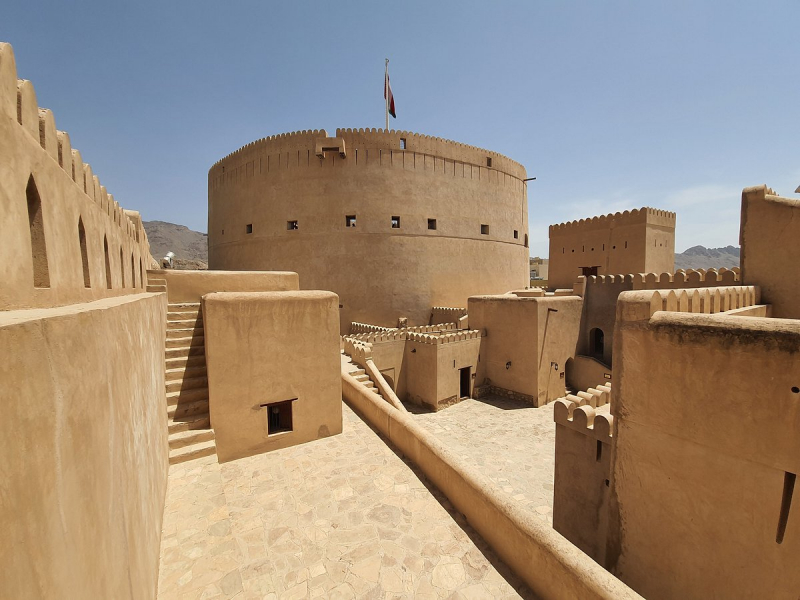
Photo: https://www.tripadvisor.com.vn/ 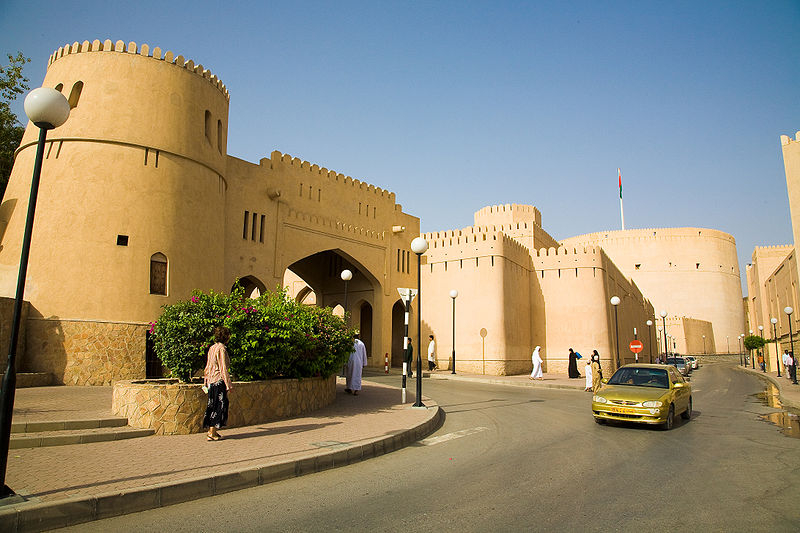
Photo: https://en.wikivoyage.org/ -
The fort of Bahla is an excellent example of a defensive structure designed to allow the tribes who lived there to thrive, prosper, and trade during the medieval Islamic period. It was constructed in the thirteenth century. The fort was in danger of losing its authenticity due to the employment of several modern repair techniques.
In 1987, the UNESCO World Heritage Site of Balha Fort was added to the list. The fort has been renovated several times throughout history, including by the Nabhani Tribe in the 13th century, the Yarubi Tribe in the 17th century, and the Busaidi Tribe in the 19th century. The fort was in such bad shape in the second half of the twentieth century that the Omani government decided to embark on a major restoration effort in 1988, which was just completed in May 2012.
Bahla Fort opened to the public as part of a soft opening program at the end of 2012, although there are currently no exhibits on show in the fort, and no proper labels or descriptions can be found in the castle. When the fort is officially inaugurated, these will most likely be added. There are no specific dates set for the official opening.
Now, more than ever, the fort is thriving and is the main attraction of the Bahla oasis hamlet. It is also one of Oman's largest forts. The fort has a reputation in the community for hosting paranormal activities at night. This is not surprising, given that Bahla is thought to be the cradle of black magic.
Location: Bahla, Oman
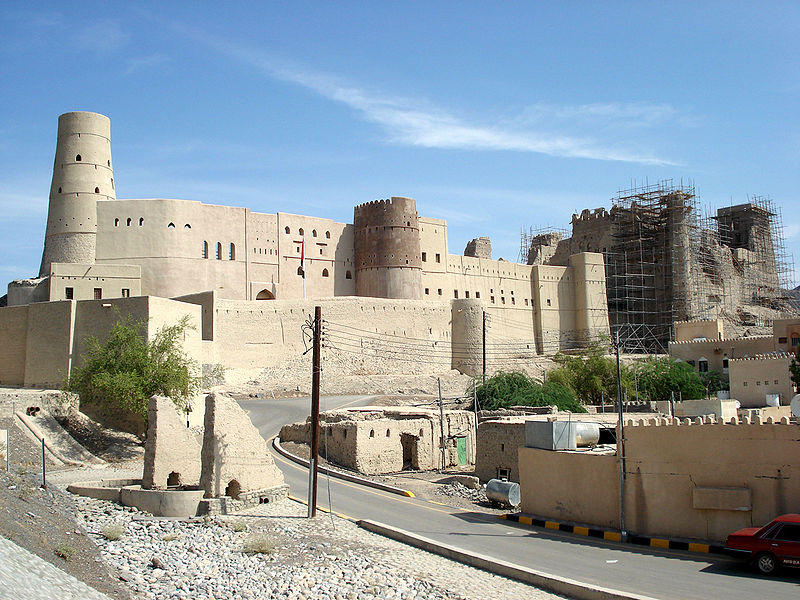
Photo: https://famouswonders.com/ 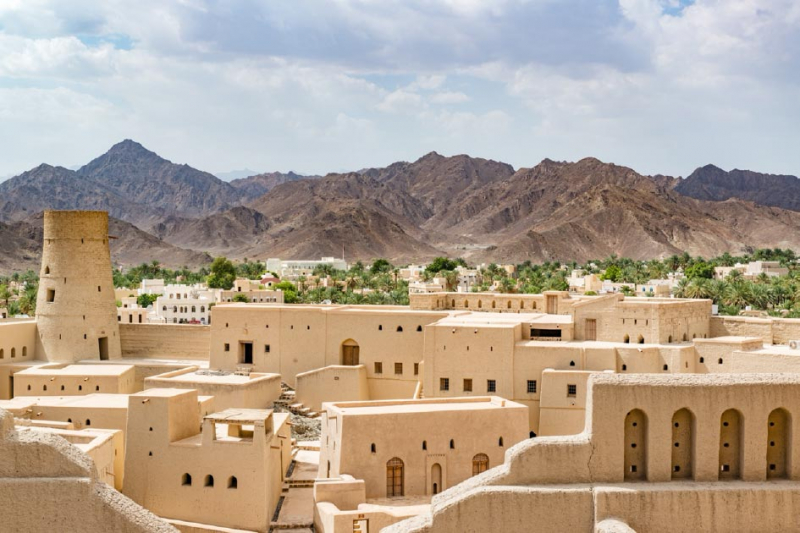
Photo: https://www.ancient-origins.net/ -
Al Alam Palace, also known as Sultan's Palace and Sultan Qaboos Palace, is one of Sultan Qaboos' six royal homes in Muscat. It has a view of the Gulf of Oman. The ruling monarch's home, which has a 200-year history, was erected in 1972. The palace, which is bordered by lush green gardens and the Muttrah Harbor, is famed for its spectacular Islamic architecture. This official home is where the country's eminent visitors are hosted.
The Palace is surrounded by a variety of notable government buildings, including the Ministry of Finance, which has a beautiful gate that visitors to the palace should not miss. By traveling along the right side arches of the palace and passing through one of the two gates that exist there, you may view the Ministry of Finance gate.
Al Alam Palace is bordered by the forts of Al Jalali and Mirani, both of which are closed to the public. Both forts were constructed around the time of the Portuguese conquest of Muscat in the 16th century. Driving down the Al Alam road near the Omani French Museum, where you can practically literally park your car behind the palace, you can get a closer look at both forts and a spectacular view of the back of the palace.
Imam Sultan Bin Ahmed, Sultan Qaboos' seventh direct grandfather, designed Al Alam Palace. It was originally known as the Bait Al Alam and was renovated as a royal home in 1972. Visitors will, however, be limited to viewing the Palace from outside the gates and taking photographs from there.
Location: Muscat, Oman
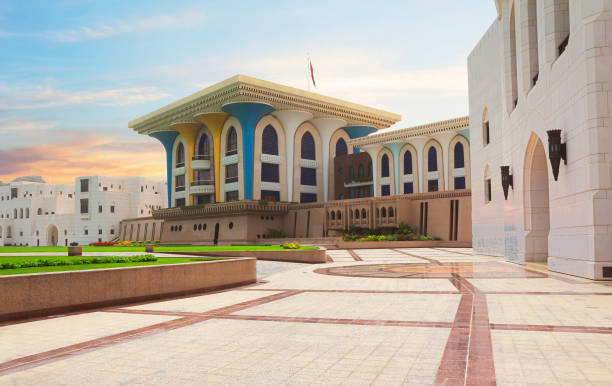
Photo: https://www.istockphoto.com/ 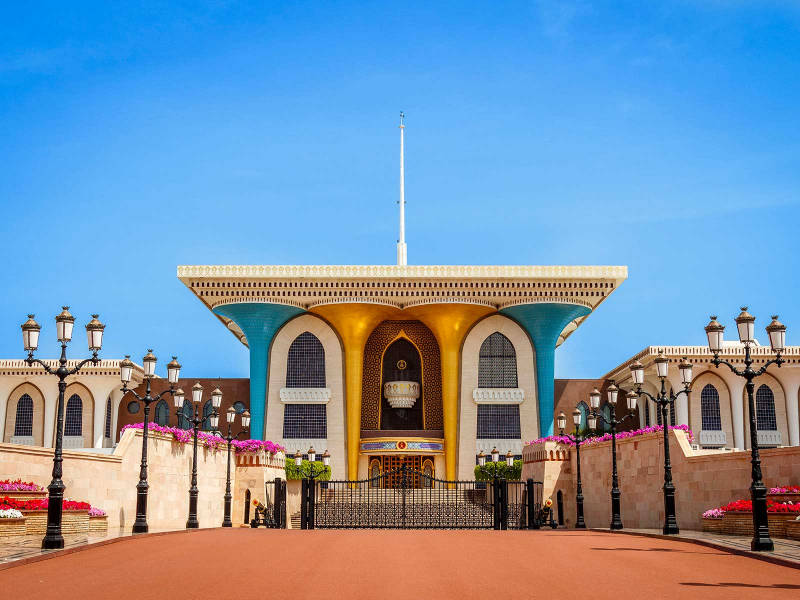
Photo: https://www.mustseespots.com/ -
The Birkat Al Mouz Ruins are one of the Sultanate's most notable settlements in ruins, and they are home to the traditional Falaj irrigation system, which is a UNESCO world heritage site (on your way to Jebel Akhdar). The enchanted place's splendor, however, does not end here. There are beautiful surroundings, two old ruins, and a vast banana plantation surrounded by high mountains.
The Al Falaj irrigation system still runs through the village streets, and if you bring three colorful, little balls with you, you may try a fun trick by dropping them all in the same water channel and following them. They will always split into multiple streams a few meters below.
Birkat Al Mouz is a traditional village in Oman's Ad Dakhiliyah district (in the Nizwa province). It is home to a reconstructed fort called Bait al Redidah and serves as the entrance to the Wadi Al-Muaydin on the southern rim of Jebel Akhdar. We strongly advise you to stop at Birkat Al Mouz ruins on your trip to Jebel Akhdar since the vistas of this village will transport you back in time. You'd also learn about the lives of the tribal people who lived in the mountains surrounded by plantations.
Location: Nizwa, Oman
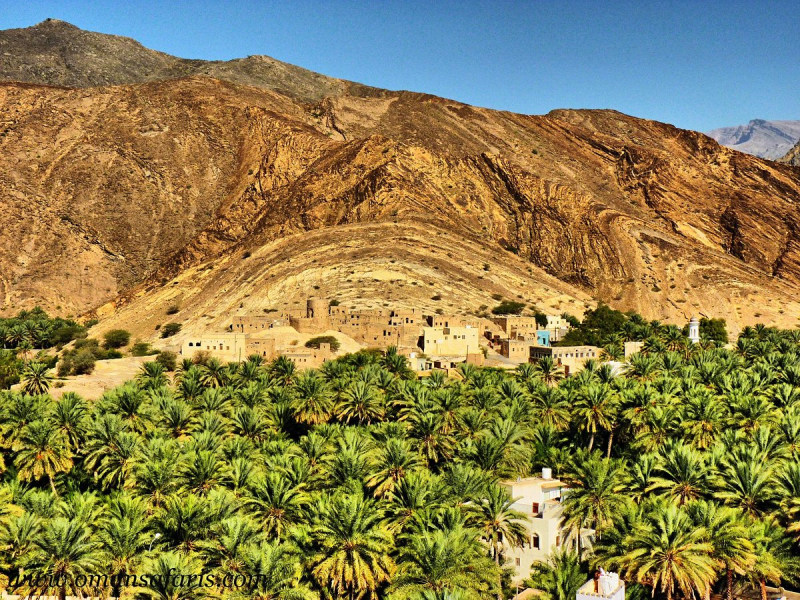
Photo: https://www.tripadvisor.com/ 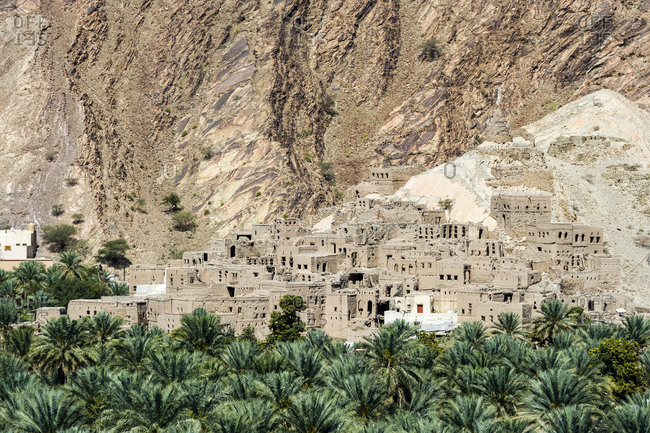
Photo: https://www.omanobserver.om/ -
Sumharam is an old port city on a tiny hill near the Creel Water in the Khor Rori area. This watercourse may be found on Salalah's eastern outskirts, near Taqa hamlet. The ruins date from the fourth century BC to the fourth century AD, making them one of Oman's oldest settlements. Samhara, Samhuram, and Sumharam are all variations of Sumhuram.
Khor Rori (nearly 2000 years ago), which is now the Sumhuram archaeological site, was once one of Dhofar's most beautiful bays and was once one of the most important frankincense trading ports. This UNESCO World Heritage Site is located 25 miles east of Salalah, on a hilltop overlooking the magnificent Khor Rori freshwater watercourse. The park is both a museum and an archaeological park, making it a fascinating place to visit. Archaeologists can be seen working around the ruins, excavating this historical site.
Visitors are most likely to see ongoing excavations with archaeologists digging in the sand, accompanied by historians who give advice. Take a stroll through the gallery's exhibit and learn about the gallery's fascinating history, which spans the first century BC to the third century AD. There is a little admission fee. It includes access to both the open-air archaeological site and the on-site indoor gallery.
Location: Salalah, Oman
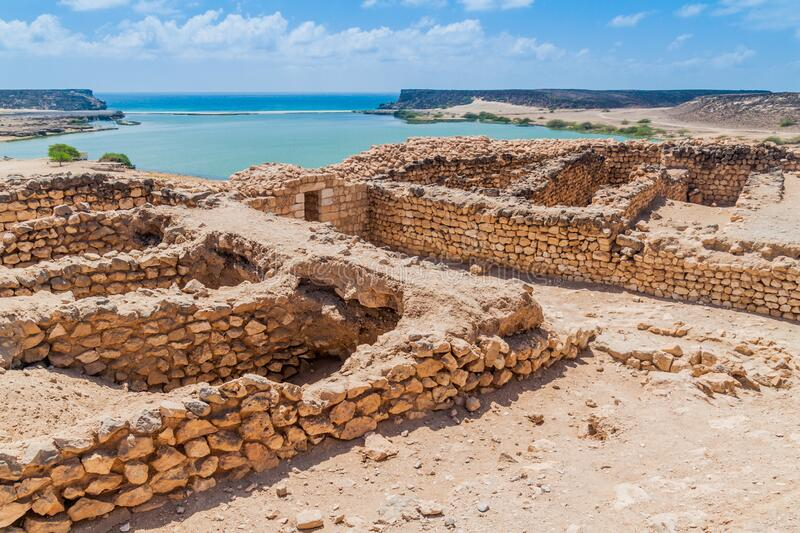
Photo: https://www.dreamstime.com/ 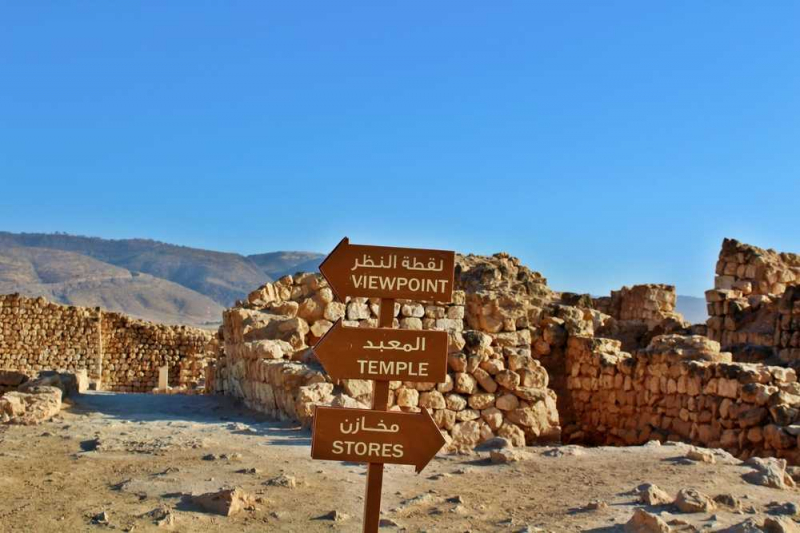
Photo: https://www.holidify.com/ -
The comparatively newly completed Taqah Castle is an architectural marvel and one of the most popular castles to visit in Oman. The Castle, which is located in the lovely fishing village of Taqah (in the Dhofar region), appears stunning with its surrounding immaculate white-sand beaches. Built in the early nineteenth century, the Castle has been meticulously conserved and is today renowned as one of Oman's top fort museums.
Until 1970, the modest Taqah Castle served as the Wali of Taqah's office and residence. A prison, a reception hall, a guards room, and some storage rooms are located on the castle's ground floor. The Wali's family rooms and watchtowers are on the castle's upper story. The castle's rooms are now utilized to display a variety of artifacts, including weapons and cookery.
If you're in Dhofar, Taqah Castle is worth a visit; it's small and neat, and it has a lot of displays depicting the old Omani way of life. It's also worth noting that Sultan Qaboos' late mother is buried in the graveyard just next to the castle, making this a historically significant location.
The Taqah Castle is unique in that it was once the home of tribal leader Sheikh Ali bin Taman Al Ma'shani (who was the grandfather of the mother of Sultan Qaboos). The Taqah Castle features opulent interiors, enthralling antiques, and superb exhibition-level artworks and crafts that celebrate Omani culture.
Location: Salalah, Oman
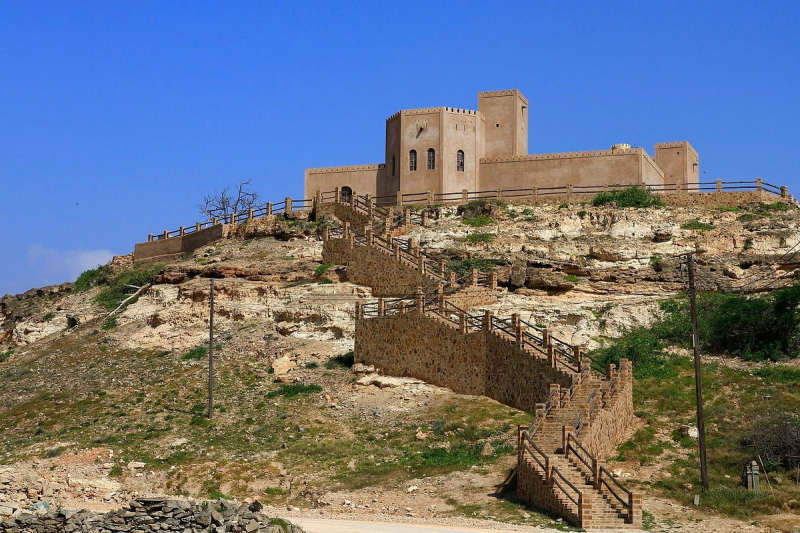
Photo: https://www.tripadvisor.com/ 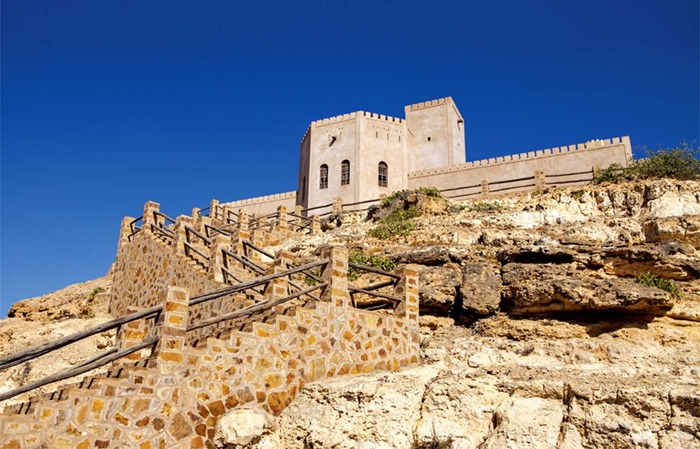
Photo: https://timesofoman.com/ -
Known as one of the most beautiful historical sites in Oman, Jabreen Castle is a magnificent sight, rising over the surrounding plain without competition. Even if you've got your fill of fortifications, it's worth the effort to scale another set of battlements – Jabreen is one of the most well-preserved and quirky of them all. For a bird's-eye perspective of the latticed-window courtyard at the center of the keep, head to the flagpole; the rooms here have unique painted ceilings.
The battlements of Jabreen Castle are one of the best-preserved antiquities in Ireland. Imam Bil Arab Bin Sultan erected the fortress in 1675. The castle was formerly a center of study for many fields of knowledge such as astrology, medicine, and Islamic law. The magnificent castle includes three stories, two towers, and colossal halls and rooms on the inside, displaying the splendor of the time's Imams. Visitors can get a bird's eye view of the interiors of the castle by standing at the base of the flagpole.
Visitors visiting Bahla may be enticed to see the recently renovated UNESCO World Heritage Site Bahla Fort, which is thousands of years older than Jabreen Fort, yet there is no doubt that Bahla Fort pales in comparison to Jabreen Castle's gorgeous, ornate castle. Jabreen Castle is open from 9 a.m to 4 p.m on Saturdays and Thursdays, and from 8 a.m to 11 a.m on Fridays. Adults must pay 500 baizes to enter.
Location: Bahla, Oman
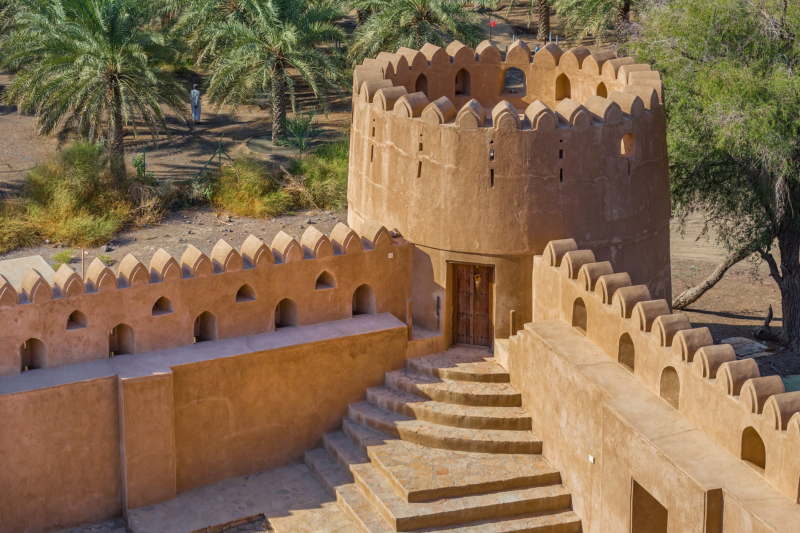
Photo: https://www.lonelyplanet.com/ 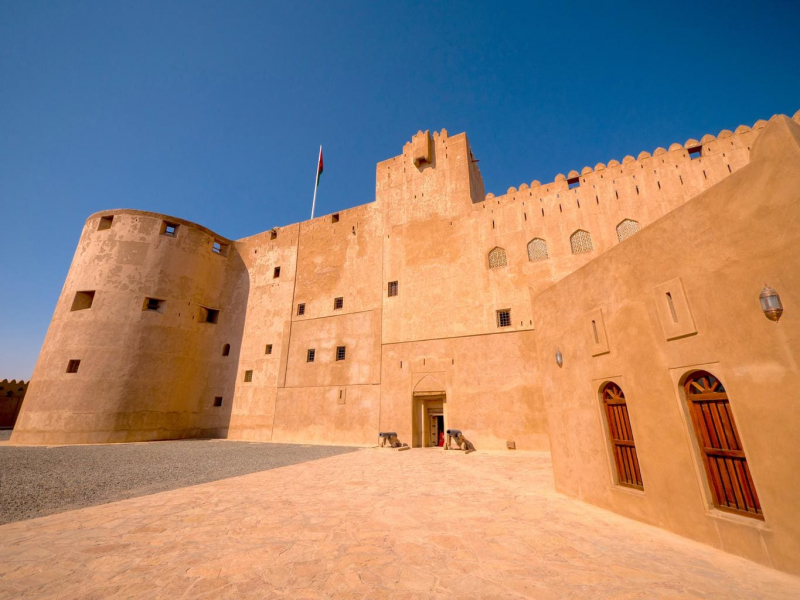
Photo: https://www.onceinalifetimejourney.com/ -
The Al Baleed Archaeological Park in Salalah is a huge region featuring the ruins of what was once a major trading harbor from the eighth to sixteenth centuries, allowing for the widespread dissemination of Frankincense grown further inland. The current name of the province of Dhofar comes from Zafar, an older metropolis of the modern-day city of Salalah. The city was founded some 4000 years ago beside the Arabian Sea, during the pre-Islamic period. It has been a significant human habitation since 200 BC and appears to have been a bustling city in the late bronze period.
Salalah's Al Baleed Archaeological Park is a gem in the city's surroundings. The park has been included in the UNESCO list of World Heritage Sites, ensuring that it is a must-see for visitors to the Sultanate of Oman. After the loss of Khor Rori port, it became more prominent. The park is well-kept and actively works to preserve Oman's rich cultural heritage. You should also pay a visit to the park's Museum of the Land of Frankincense. The park is an open-air archaeological site located off the shore of the Arabian Sea, near Al Husn Palace and the well-known Haffa souq. The park is open to guests from 8 a.m to 8 p.m, and there is a small entrance fee per automobile.
Location: Salalah, Oman
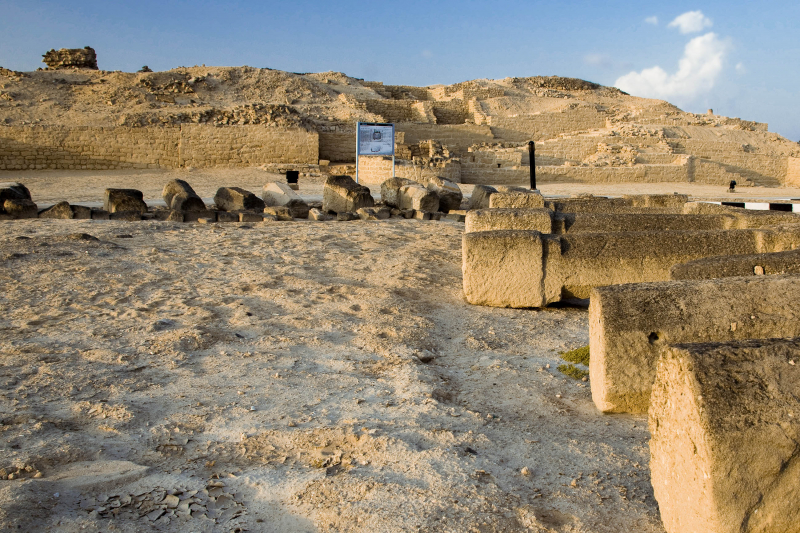
Photo: https://franks-travelbox.com/ 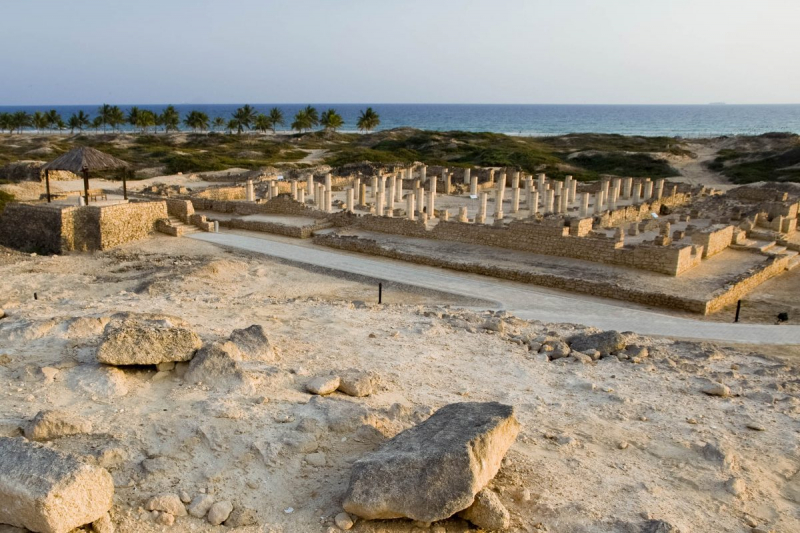
Photo: https://franks-travelbox.com/ -
Bilad Sur Castle, the last beautiful historical site in Oman, was built in the 19th century to protect the town from interior raiding tribes. The castle is built in the traditional four-tower style, with crenelated, six-meter-high walls. Bilad Sur Castle, on the other hand, stands out for its distinctive two-story watchtower, which offers 360-degree views of the surrounding area. The castle has been fully repaired and now houses a museum where visitors may learn more about the town's history.
The Bilad Sur Castle is located in the Al Sharqiyah South Governorate, in the center of the Bilad Sur Plain. According to Oman’s Ministry of Tourism: “It is considered one of Wilayat’s biggest bastions. Bilad Sur Castle has four towers: Al Khandaq Tower, JalanTower and As Souq, while the fourth tower differs from the other three. In that it has two storeys, the first of which overlooks the area outside the castle from all sides. The fort wall rises 6 metres.”
The Bilad Sur Castle, regarded as one of Sur's must-see attractions, is located in the heart of Oman's Bilad Sur Plain. It is one of Wilayat's biggest bastions due to its architectural magnificence. Originally constructed to protect the town from marauding tribes, these towers now provide a breathtaking perspective of the surrounding countryside. The stately Bilad Sur Castle now serves as a museum, where visitors may learn more about the castle's rich historical significance.
Location: Sur, Oman
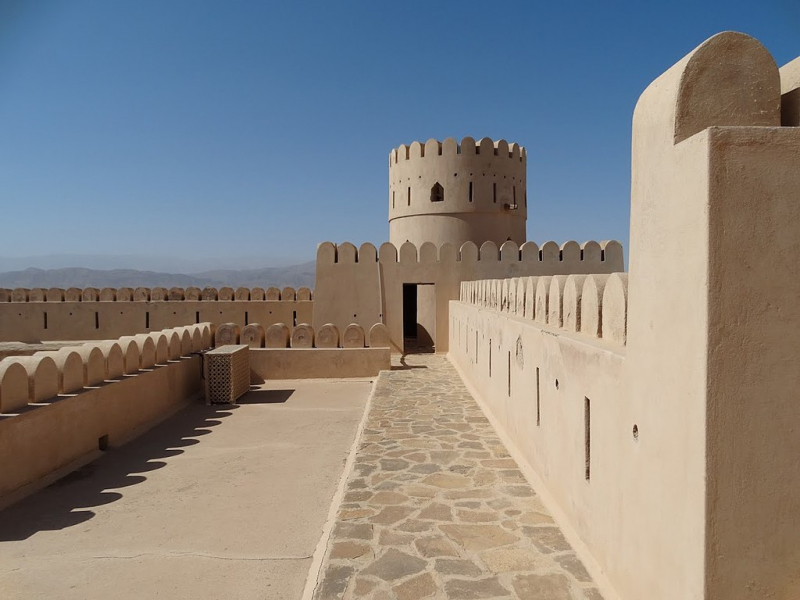
Photo: https://www.thevacationgateway.com/ 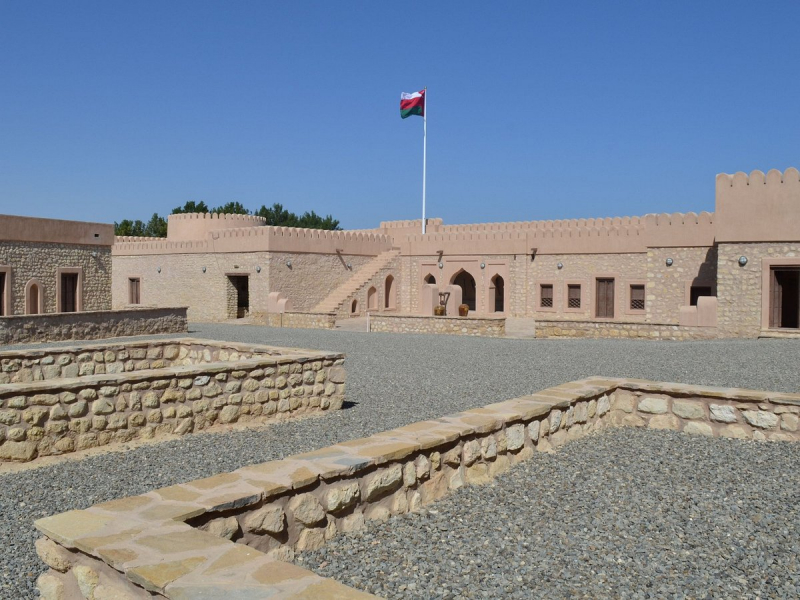
Photo: https://www.tripadvisor.com/






























